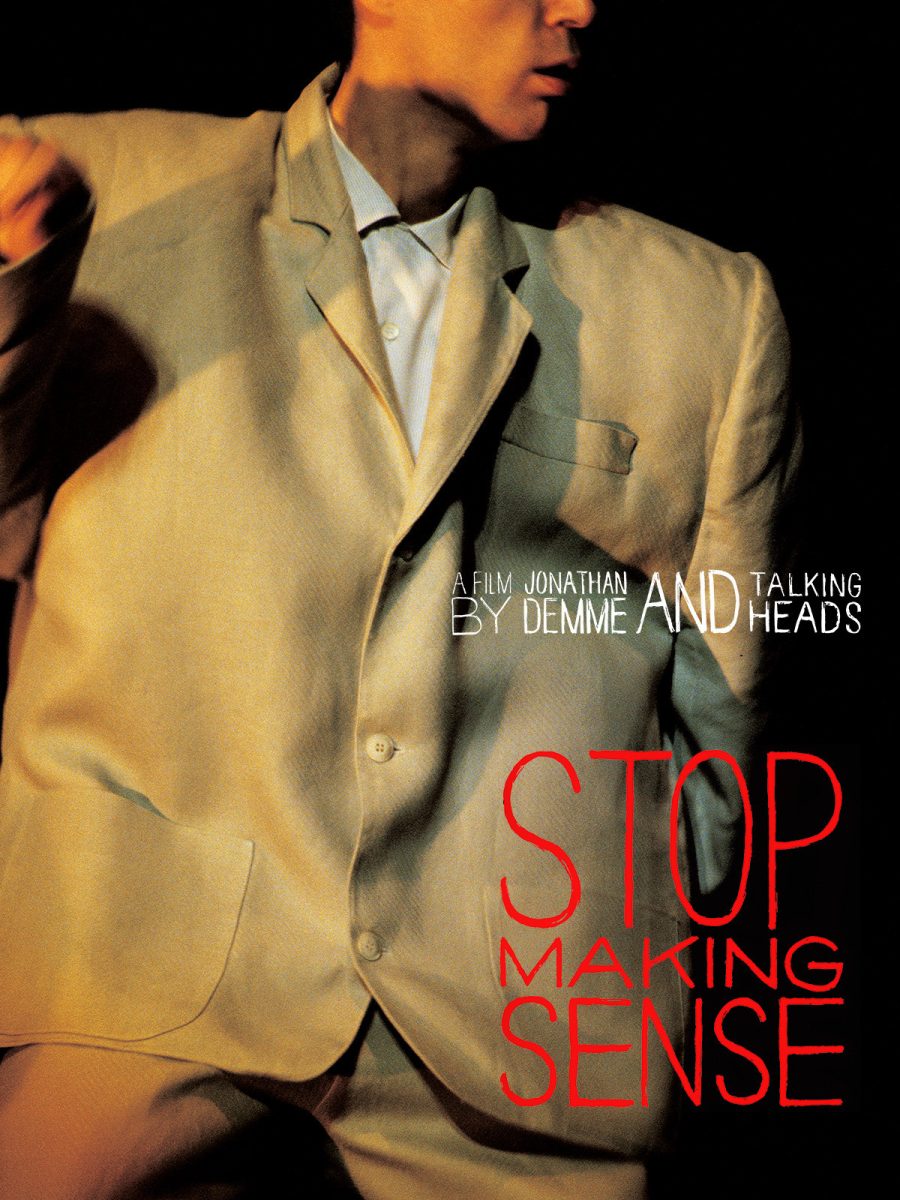David Byrne, the frontman of Talking Heads, walks onto a stage with the curtain up, the back wall unpainted and covered in ladders and scaffolding. In his hand is a boombox.
“Hi. I’ve got a tape I want to play,” says Byrne.
From there, the beat to the band’s most famous track “Psycho Killer” kicks in.
That’s how “Stop Making Sense,” a 1984 concert film of Talking Heads’ four-night stint at the Pantages’ Theatre, starts.
The film, which was recently bought and restored by A24 Studios, was released in theaters Friday. Directed by Jonathan Demme, the film is the perfect combination of sound and sight.
Demme takes the band’s songs, full of post-punk and new-wave weirdness, and pairs them with visuals that make the music even more impactful. Rather than creating epic staging with lights that shock the audience, the pairing of Demme and Talking Heads opts for simple lighting, emphasizing shadows made for the screen and spotlighting specific members of the group when songs require it.
When bassist Tina Weymouth comes in on the second song, her presence gets accented with a large black square box (about the size of a couch) that gets rolled in by the tech crew. This simple addition adds a visual representation of Weymouth’s playing, simple and in the background – like a bass player should be.
This basic pairing of the musical with the visual may seem minute; but, really, by removing all of the added frills, the bones of the show become the beauty of it.
If Weymouth’s addition was paired with wildly streaming lights and bass riffs galore, it would lessen the point of her addition. Instead, Demme and the band add in basic elements – the building blocks of both stage and band – so that the focus remains on the performance.
Byrne’s dance moves feel foreign and drug-induced, and Demme moves the camera around Byrne’s frenetic flapping in a way that places it on the level of the Joffrey Ballet’s reconstruction of Stravinsky’s “The Rite of Spring.”
Like a Renaissance painting, shaded and shrouded by light, the group of performers, each with their own succinct and convulsive movement, build a show on the stage that defies the simplistic performance.
The band had its best performance in the penultimate track “Take Me to the River.”
Musically, Chris Frantz’s drumming was simple and perfect for the groove, backup singers Lynn Mabry and Ednah Holt brought so much energy to the song and Byrne’s singing was versatile and flowed as the track went on, adding flavor to the tight backing of the band behind him.
The most important visual factor to the film’s success was easily the way that Demme played with light.
When the music gets its most chaotic, Demme simplifies the visual production. During the climax of the performance, the only thing on the screen is Byrne’s face, half-obscured by shadows. Through this obfuscation, the music becomes the main attribute of the composition again.
When the music started to settle down, Demme chose shots that were wider and full of more visual information, taking the chance to center the scene and use the music to flavor the film. Demme, depending on the musical complexity, made the stage span mere inches to many miles.
For an 88-minute film, the performances flew by and forced my attention to be held. While the film may be from the ‘80s, the restoration by A24 made the film look about as good as I’ve seen a film look.
Most of all, it seems like all of the choices throughout the production, from staging to design to cinematography, were made to benefit the music. To me, that is the point of a concert film, to elevate the musical performance with visual tools. “Stop Making Sense” did just that.














